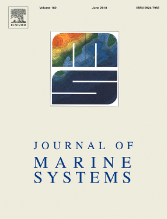Multimodel inference to quantify the relative importance of abiotic factors in the population dynamics of marine zooplankton

Scientific abstract
The effect of multiple stressors on marine ecosystems remains poorly understood and most of the knowledge available is related to phytoplankton. To partly address this knowledge gap, we tested if combining multimodel inference with generalized additive modelling could quantify the relative contribution of environmental variables on the population dynamics of a zooplankton species in the Belgian part of the North Sea. Hence, we have quantified the relative contribution of oceanographic variables (e.g. water temperature, salinity, nutrient concentrations, and chlorophyll aconcentrations) and anthropogenic chemicals (i.e. polychlorinated biphenyls) to the density of Acartia clausi. We found that models with water temperature and chlorophyll a concentration explained ca. 73% of the population density of the marine copepod. Multimodel inference in combination with regression-based models are a generic way to disentangle and quantify multiple stressor-induced changes in marine ecosystems. Future–oriented simulations of copepod densities suggested increased copepod densities under predicted environmental changes.
Full reference (link):
Everaert, Gert, Deschutter, Y., De Troch, M., Janssen, C., & De Schamphelaere, K. (2018). Multimodel inference to quantify the relative importance of abiotic factors in the population dynamics of marine zooplankton. JOURNAL OF MARINE SYSTEMS, 181, 91–98.
